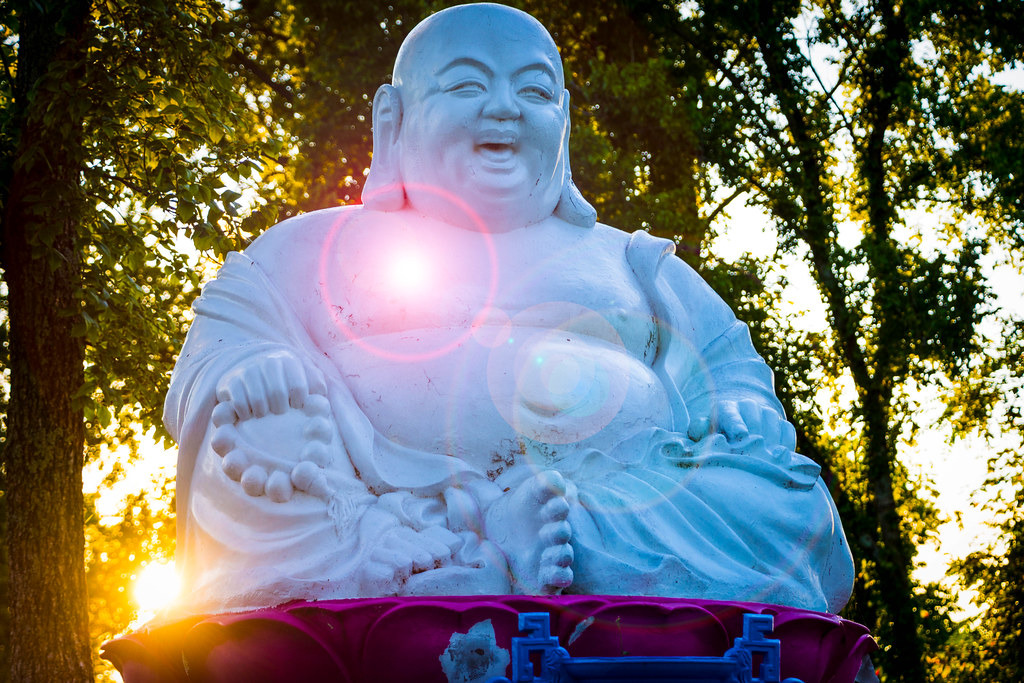The cheerful Laughing Buddha is a good blessing and prosperity. This deity sculpture is also available by many people as a feng shui symbol.
Besides the above meaning, the Maitreya Buddha statue with different shapes also carries many meanings in life. Here are the types of Laughing Buddha you may not know. Continue scrolling down to learn more!
Laughing Buddha Meaning
The Laughing Buddha first appeared in Chinese legend. People in this country believe that Maitreya Buddha is the reincarnation of the monk Pinyin.
He spent his life traveling worldwide while practicing asceticism according to Buddhism. He always carried a small cloth bag with a smile to every land.
After transforming into Maitreya Bodhisattva, this monk always brings joy and happiness to everyone and supports sentient beings in solving current problems.
Meanwhile, in Indian culture, the Laughing Buddha resembles the Kubera, the statue of wealth. Therefore, for Indians, placing the Maitreya Buddha statue in your house will attract good blessings and fortune.
8 Types of Laughing Buddha
For a long time, the Laughing Buddha was available as a feng shui item. Each different statue has its meaning. Below are the Laughing Buddhas along with detailed explanations.
1. Laughing Buddha comes with a bag or sack
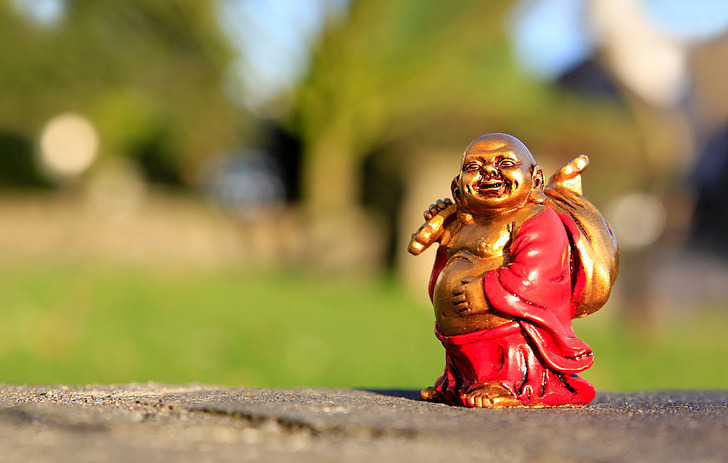
Some feng shui experts explain that the bag on the Buddha’s shoulder is to collect human suffering and unhappiness. And after taking away the pain, the Buddha will bring happiness and positivity.
In some cultures, sacks are believed to represent good blessings and prosperity. With the pack on their shoulder, the Buddha will bring prosperity and material abundance to people.
The Maitreya Buddha statue with a sack on its shoulder should be in the living room. According to feng shui, this position will bring good luck to the family.
2. Laughing Buddha is holding the beads
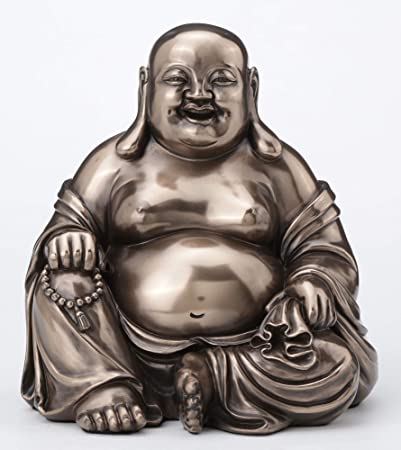
Laughing statues with beads in their hands are certainly not too strange. The necklace is for meditation, calmness, and wisdom. This particular statue is said to bring calm and knowledge to the user.
In addition, the beads in the Buddha’s hand are also often understood as signifying health, attracting wealth and luck.
A smiling statue holding a rosary is a good feng shui sign. You can place this statue in the East and Southeast corner of the house.
3. Laughing Buddha on the gold nugget
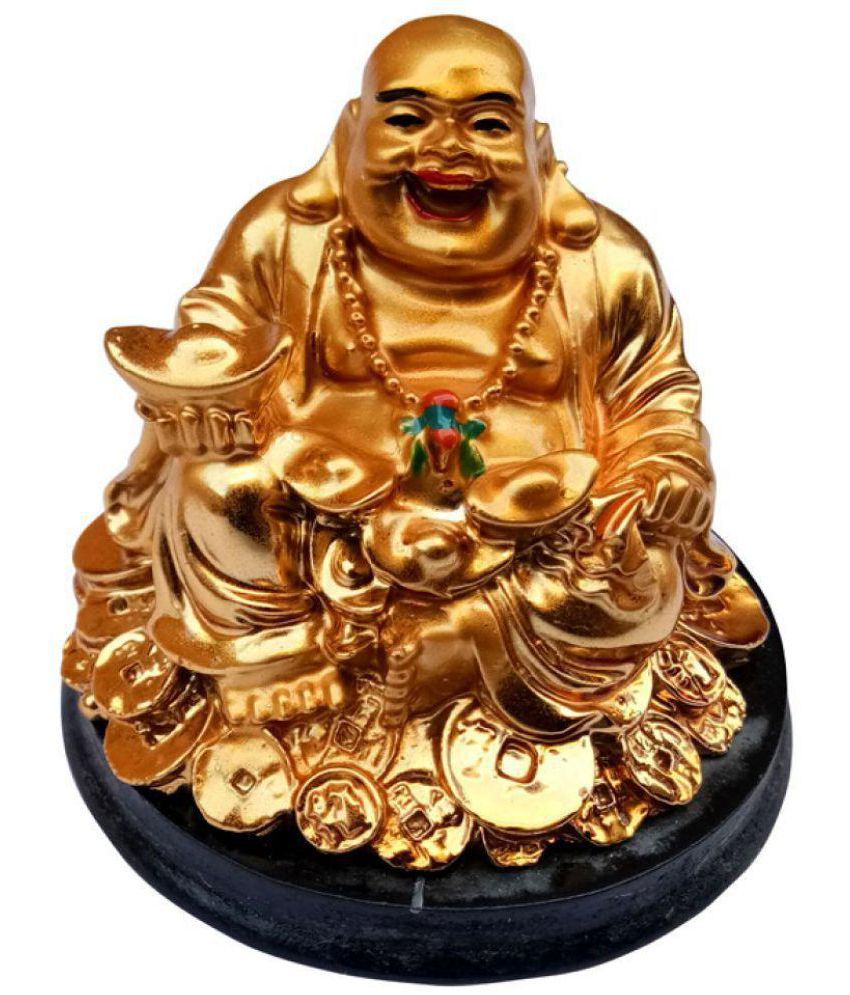
The Buddha with a large gold nugget is an image depicting blessing sentient beings. This statue has been associated with affluence, wealth, and success.
With this statue, you can be protected from harmful things. In feng shui, placing the Buddha with gold bars in the house’s Northwest will attract fortune to the owner.
4. Laughing Buddha on a fan
The fan on the Buddha’s hand in Eastern culture has the power of a wand, able to grant any wish. The fan is also available to ward off bad luck and demons. On the other hand, a gourd is an object that protects people from diseases.
The Buddha image with a fan and gourd will be associated with good luck and health. You can place this statue in any apartment corner to receive blessings.
5. Laughing Buddha upon a hat
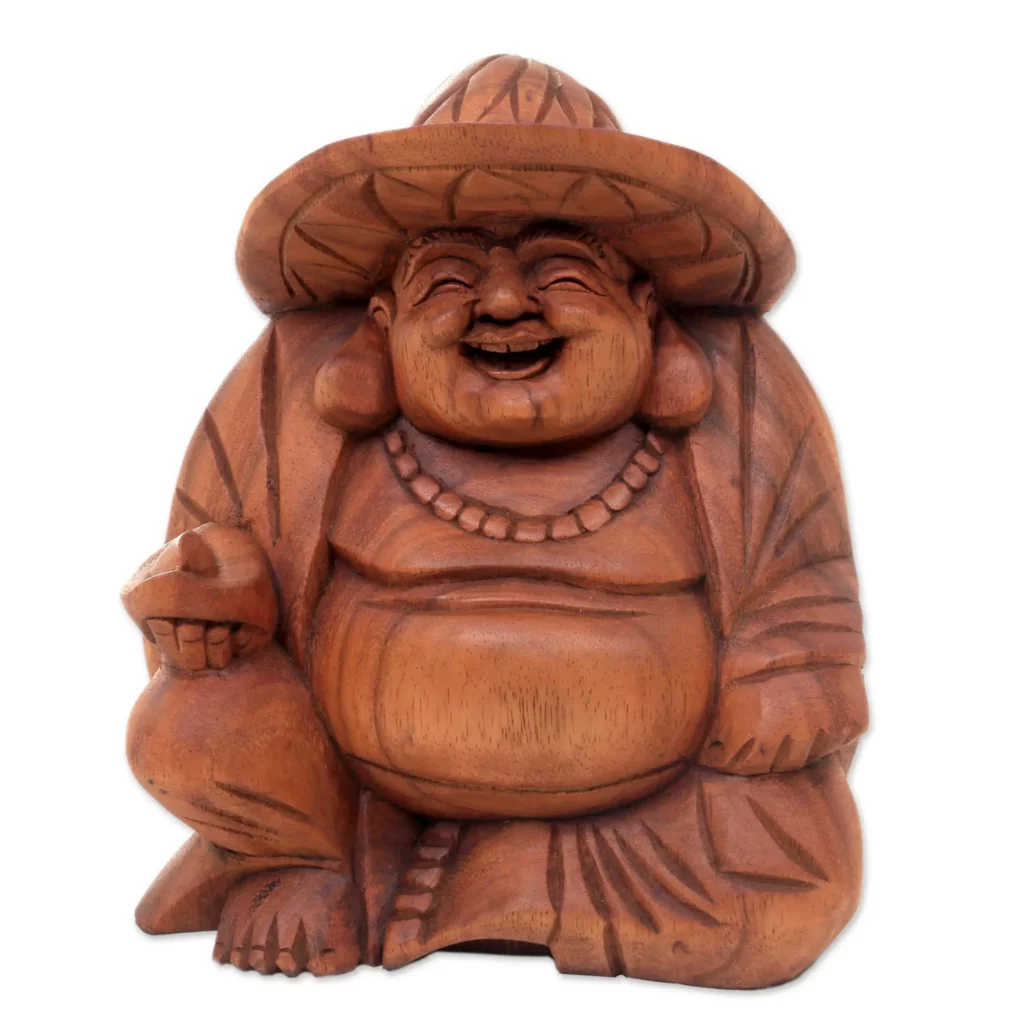
The Maitreya Buddha statue with the hat is like a whole and happy life. Feng shui experts also often recommend using this statue to pray about a more comfortable and balanced life.
6. Laughing Buddha on an ingot
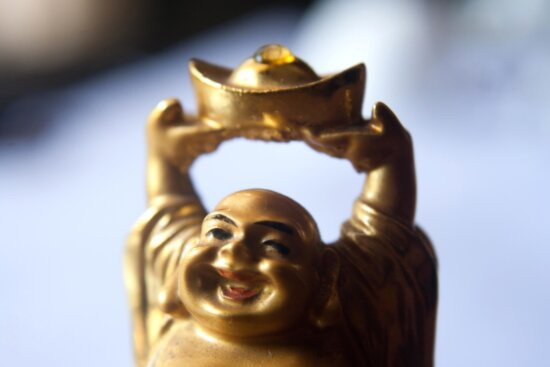
Buddha holding a gold bar with straight hands symbolizes favor and luck in work for believers. It is also representative of a successful career and financial affairs.
7. Laughing Buddha takes a bowl
Maitreya Buddha, with his empty bowl, is reminiscent of the monk who spent his life in ascetic practice. This type attempts to pursue enlightenment, ideal life, and human happiness.
In addition, the bowl in the Buddha’s hand can also be considered a wisdom or positive energy symbol.
8. Laughing Buddha sits with kids
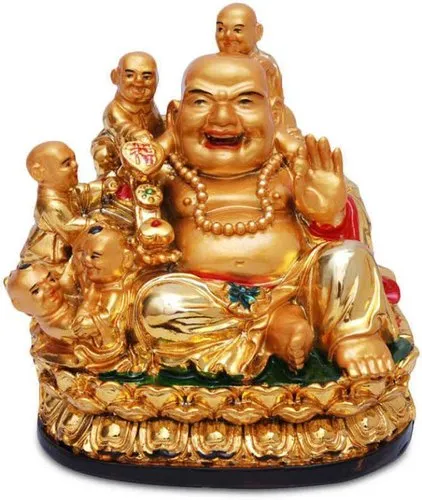
It is easy to see Maitreya Buddha statues sitting with children, usually five small children. It gives prosperity, luck from heaven, or positive energies.
FAQs
You may only know a few other facts about Maitreya Buddha and his sculpture. Here are some answers to the most frequently asked questions.
Which position should a Laugh Buddha be in your home?
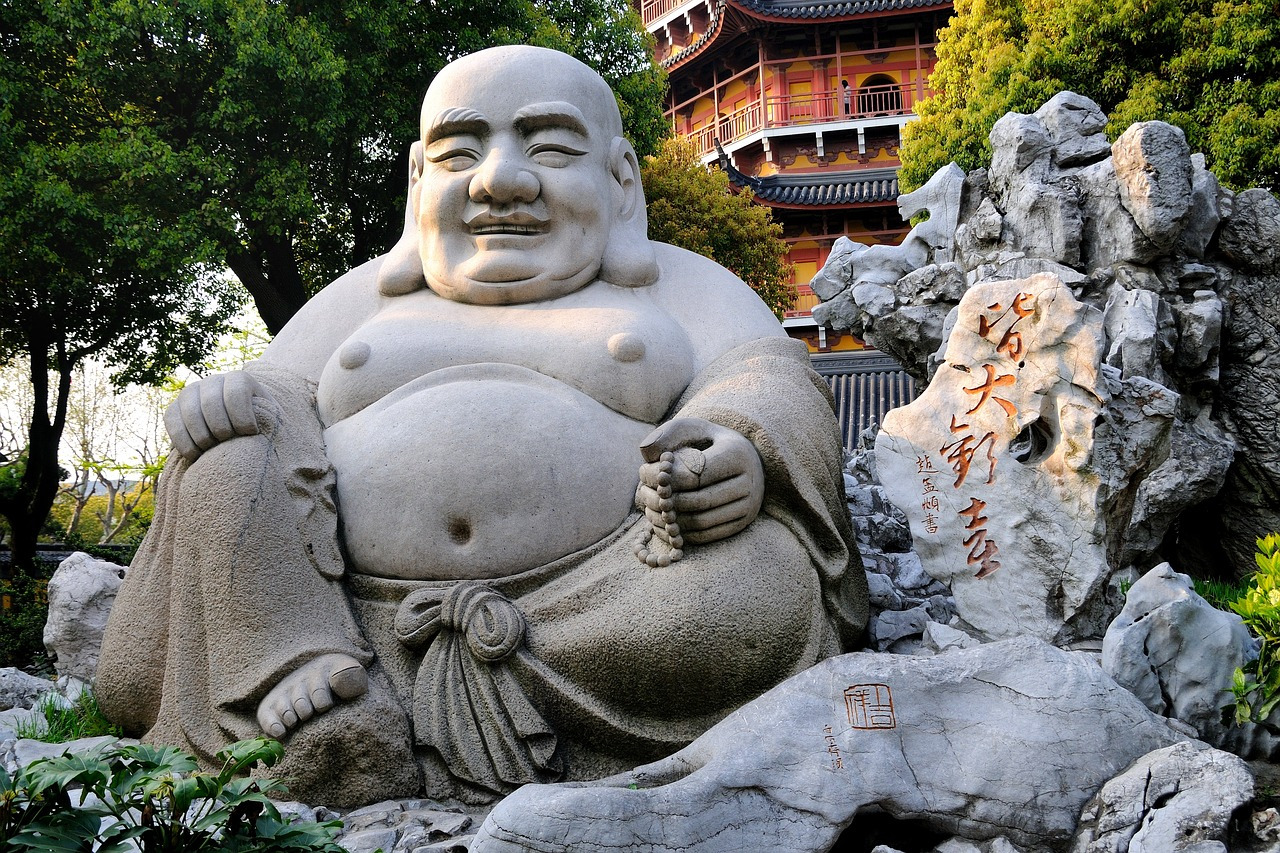
You can place the Maitreya Buddha in the house’s East and Southeast. Facing the main door or facing inside the house are also good positions to place.
How many Laughing Buddha statues can I keep at home?
There is no specific regulation on the maximum number of Maitreya Buddha statues that can appear in the house. However, it would help if you focused on exact figures in the most suitable positions to get positive energy effectively.
What does the Baby Buddha monk statue signify?
Small Maitreya Buddhas are widely available for decorative purposes. This statue type is also a symbol of luck and happiness.
What are the different names of the laughing Budha?
In Chinese culture, Maitreya Buddha is known as Budai. The name comes from the sack of thorns he always carries. In some other cultures, Maitreya Buddha is also known as Hotai or Putai.
Can I keep a Laughing Buddha in your garden?
You can place the Maitreya Buddha in your garden. However, you should note that Buddha statues should not be placed directly on the ground. Also, the figure should face east.
Conclusion
There are many types of Laughing Buddha statues today.
Hopefully, you better understand the characteristics and implications behind these statues through this post. From then, you will find the suitable one.
If you have further questions, please leave comments below for us to answer as soon as possible. Thank you for reading!

